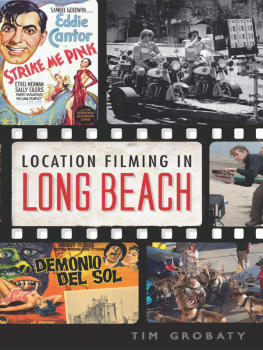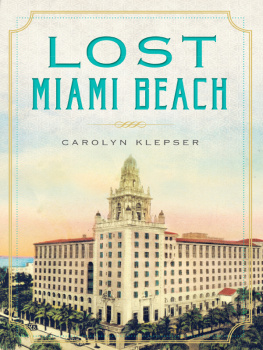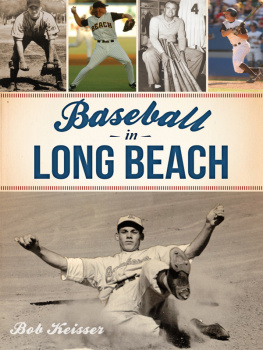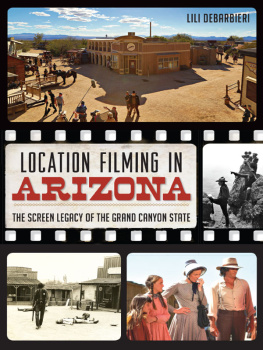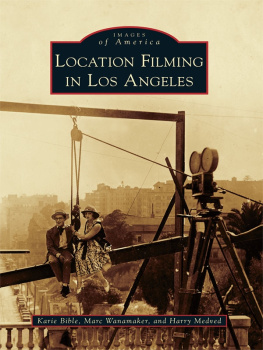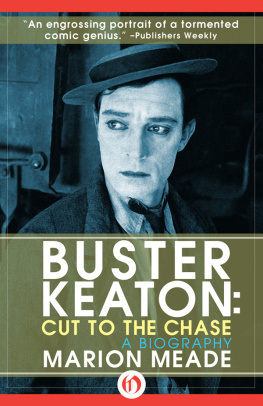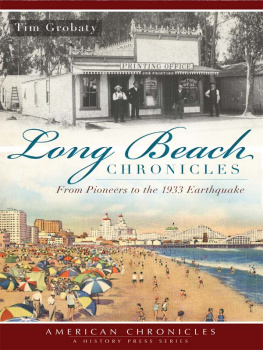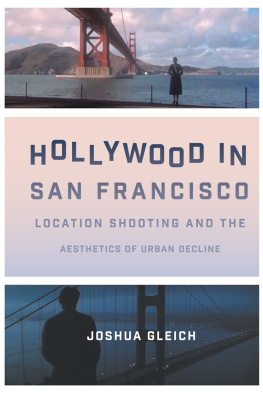

Published by The History Press
Charleston, SC 29403
www.historypress.net
Copyright 2012 by Tim Grobaty
All rights reserved
Unless otherwise noted, images appear from promotional materials.
First published 2012
e-book edition 2012
Manufactured in the United States
ISBN 978.1.61423.776.1
Library of Congress CIP data applied for.
print ISBN 978.1.60949.740.8
Notice: The information in this book is true and complete to the best of our knowledge. It is offered without guarantee on the part of the author or The History Press. The author and The History Press disclaim all liability in connection with the use of this book.
All rights reserved. No part of this book may be reproduced or transmitted in any form whatsoever without prior written permission from the publisher except in the case of brief quotations embodied in critical articles and reviews.
CONTENTS
PREFACE
I have been covering Hollywood location filming in Long Beach since the dawn of motion pictures. Or, to put a finer date to it, since about 1997 when Jack Nicholson and Helen Hunt were working on the movie As Good As It Gets, cavorting around the old Windrose Restaurant, where my wife and I proposed to one another back in 1975.
The actors, who would both win best-acting awards for their work in that film, were also seen down at the Seal Beach Pier and other locations in and around Long Beach. I wrote about it, and my editor at the time, Carolyn Ruskiewicz, suggested, in the way that bosses can suggest things, that I write about location shooting every week.
I balked, in the way that writers can balk at things when they sense extra work looming. I cant do this every week, I whined. Theres not that much filming going on.
Well, there was, and is. Each week, I easily filled an empty spot in the paper with news about who was in town from Hollywood and what they were up to.
Many of those columns are in this book, as is the most complete listing of feature films made in Long Beach that I could compile. Is it encyclopedic? Im going to go ahead and say, with all mock humility, yes. Is it absolutely complete? I have to say no. At some point, I had to cut out some pictures that youve never heard of because theyre so small or so bad they cant even make the cut for so-bad-its-good cult classics. And some, Im guessing, I just missed somehow. But if theres a more thorough list of what films were made in Long Beach and where they were filmed in town, I wish Id known about it before I took on the task.
The incredible and invaluable Internet Movie Database (IMDb.com) does have a lengthy list of titles shot in town, but it rarely mentions where, exactly, the filming took place. The citys online listing is wildly incomplete, and if the film office has a more sprawling list somewhere, it wasnt handed over to me with a nice ribbon tied around it.
I used personal experiences and the Press-Telegram archives when I could. In other instances I depended on various websites, the most valuable of which is Gary Waynes Seeing-Stars.com. Wayne and I have been trading location spots for several years, though he is the master of tracking places down. If youre a film fanatic, or just fan, visit his site. Its pretty brilliant.
John Robinson, who owns and operates Long Beach Locations (www.filmlb.com) and formerly worked with the citys film department, is the most indispensable and reliable person when it comes to tracking down whats going on in Long Beach filming. Hes been our man in Hollywood for more than a decade, and some of his fine photography is scattered throughout this book (he still hasnt got a movie job for my house, though).
Another fine photographer whose work appears in the book is my longtime friend Thom Wasper, who brings a fearless, mad-dog approach to his work. Ive often scampered behind him like a running back following his blocker into sets and locations I shouldnt have been allowed in, and he has wrangled some titles for me from the most secretive sites.
Long Beach librarian, researcher and author Claudine Burnett has, as is always the case, been a tremendous and reliable source of some of the facts in this book, especially regarding the Balboa years. There are some history writers in this town who use her research shamelessly (she is remarkably free with it) without giving her credit. I hope to never forget or neglect to mention the work she has done in archiving and preserving the citys history in every aspect.
Also of great use in the Balboa years is Cal State Long Beachs comprehensive Balboa Research Archives, whose advisory board includes Burnett and author Jean-Jacques Jura. Jura and Rodney Norman Bardin II authored the excellent Balboa Films: A History & Filmography of the Silent Film Studio (McFarland, 1999).
For all that, in the end, mistakes and omissions are all mine.
My former boss and now sidekick and co-bickerer Rich Archbold has my everlasting thanks for his eternal support and encouragement, and Im similarly proud and honored to know and to work, or to have worked, with so many people who keep writing and otherwise working to keep journalism alive. Thats too many names to mention, plus Im running out of space, which I cant allow to happen before giving thanks to my beloved wife, Jane, and our two beautiful children, Ray and Hannah. This book is dedicated to all of you.
Chapter 1
BALBOA FILMS
Even before filmmaking, things were in place for the little seaside town of Long Beach to become a world-class moviemaking capital. Theaters in downtown, especially along the Pike amusement zone, were regularly packed with entertainment-seekers enjoying legitimate theater and vaudeville acts.
Before he went on to wealth and fame in New York (and returned later to Long Beach for more), Roscoe Fatty Arbuckle sang and performed in comedy acts at the theaters, including the Byde-A-Wyle at 336 The Pike. At that same theater, in 1908, he would marry a young dancer, Minta Durfee, who would co-star with him in some of his films.
On June 22, 1900, while the moving picture was still very much in its novelty stage, not quite threatening to kick vaudeville and stage performances out of the nations theaters, Long Beachs largest assembly hall, the old Tabernacle, built at the northeast corner of Third Street and Locust Avenue, hosted a showing of a Thomas Edison picture, bringing what would later be termed Hollywood to Long Beach. Had things worked out a little differently, in fact, Long Beach today would be synonymous with the art and industry of filmmaking.
In 1910, a group of Los Angeles and Long Beach businessmen, headed by T.L. Howland, of Long Beach, formed the California Motion Picture Manufacturing Company. Howland, who had financial ties with the Bijou Theater in Long Beach, told the Long Beach Press that demand for new motion pictures was far outweighing the supply. There were, in fact, already thousands of movie houses in the country (thanks to the easy conversion of vaudeville theaters into movie theaters), and the countrys audiences were devouring the relatively meager output of the studios.
Did the new company have ambitious plans? It did. In their comprehensive Balboa Films: A History & Filmography of the Silent Film Studio, authors Jean-Jacques Jura and Rodney Norman Bardin II found the companys articles of incorporation, which state as the businesss plans:
To engage in and carry on the business of manufacturing moving or motion pictures. To engage in the art and manufacture and sale of photographic motion picture films for the purposes of advertising, instruction, amusement, and such other profitable uses and purposes, as the Board of directors may direct
Next page
